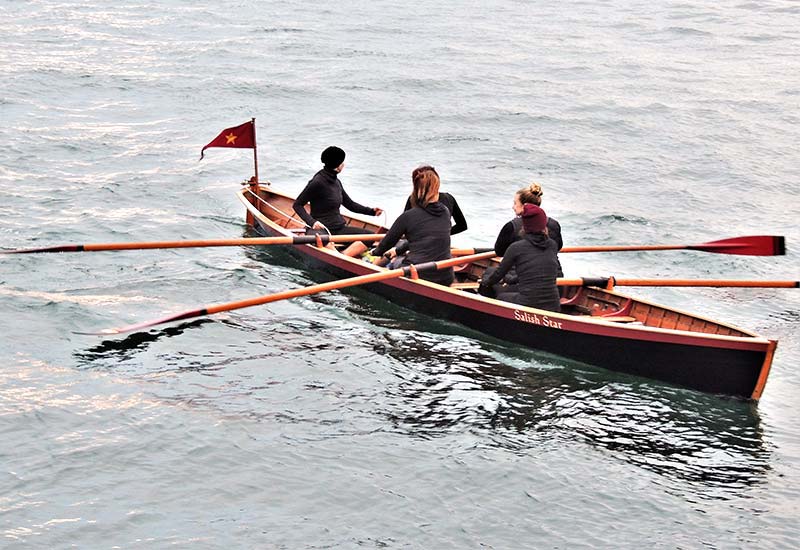The Salish Star is a replica of the four-oared racing gig American Star that was rowed to victory on the Hudson River in 1824 by the White-hallers of New York City against a gig from a British warship.
Competitive rowing was a popular activity, and the American Star was considered to be the world’s fastest such craft.
As described by Colin Hermans of San Juan Island in a story he wrote on the 27-foot long, 4-foot wide gigs, the boat is crewed by a coxswain and four oarsmen, each pulling a single sweep from opposite sides. Sliding seats had not yet been invented by 1812, so full power had to be generated from rowers’ backs and arms without help from their legs. By putting the rowers on opposite sides of the boat, Hermans wrote, a longer, and more powerful stroke could be generated than when rowers sat in the middle of the boat, as they do today when they row with sliding seats and outriggers holding oarlocks away from the sides of very narrow racing boats.
In 1825 the American Star was gifted to General Lafayette, the Revolutionary War hero on his last visit to the United States, and was consequently shipped to France where it was on display at the Chateau de la Grange. When the American Star was eventually discovered in 1968 by Kenneth Durant who was researching the origins of the Whitehall rowboats, it was realized that this particular gig was probably the oldest surviving American small craft.
In a cooperative effort between the Mystic Seaport Museum and John Gardner, maritime historian, the lines were taken off the hull in 1972. The first replica, the General Lafayette was built in 1974.
The Salish Star was built in Port Townsend by Ed Louchard and Alex Spear during the winter of 1998 as an addition to the Wooden Boat Foundation rowing program fleet to participate in the Pacific Challenge. It was rowed by a team of five women in the inaugural run of the Northwest Maritime Centers’ Seventy48 Race from Tacoma to Port Townsend in 2018.
